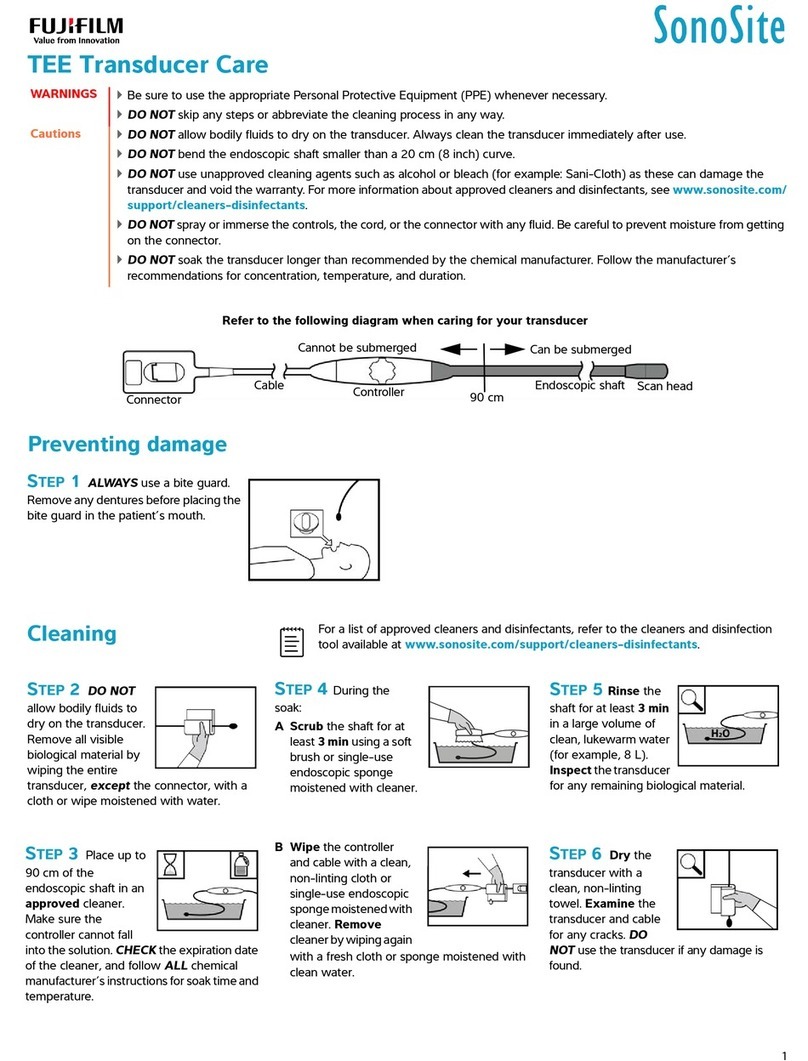
iv
CONTENTS
4. Transducer Care
Before getting started ......................................................................................................................................... 4-1
Process overview ......................................................................................................................................... 4-2
Transducer components ........................................................................................................................... 4-2
Cleaning the transducer ..................................................................................................................................... 4-3
Testing the transducer for electrical leakage ......................................................................................... 4-5
About leakage testing ............................................................................................................................... 4-5
Disinfecting the transducer ............................................................................................................................... 4-8
Identifying the transducer as clean and safe ........................................................................................4-10
Transporting the transducer ...........................................................................................................................4-11
Storing the transducer ......................................................................................................................................4-12
Disposing of the transducer ...........................................................................................................................4-13
5. Safety
Standards compliance ......................................................................................................................................... 5-1
Annual inspection .................................................................................................................................................. 5-1
Safe operational use ............................................................................................................................................ 5-2
Thermal safety ........................................................................................................................................................ 5-3
Thermal limits ................................................................................................................................................. 5-3
Reducing temperature .............................................................................................................................. 5-5
Guidelines for reducing MI and TI ....................................................................................................... 5-5
Output display ............................................................................................................................................... 5-6
Transducer surface temperature rise ................................................................................................ 5-6
Temperature calibration test .................................................................................................................. 5-6
Electrical safety ....................................................................................................................................................... 5-7
Electrical safety test .................................................................................................................................... 5-8
6. Transducer specifications
TEExp/8-3 MHz transducer ............................................................................................................................. 6-1
Acoustic output ...................................................................................................................................................... 6-3





























